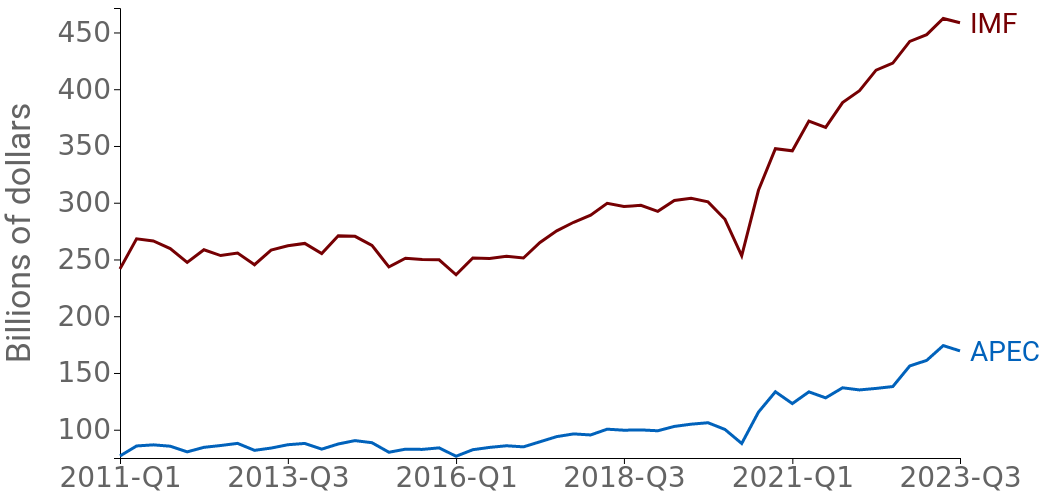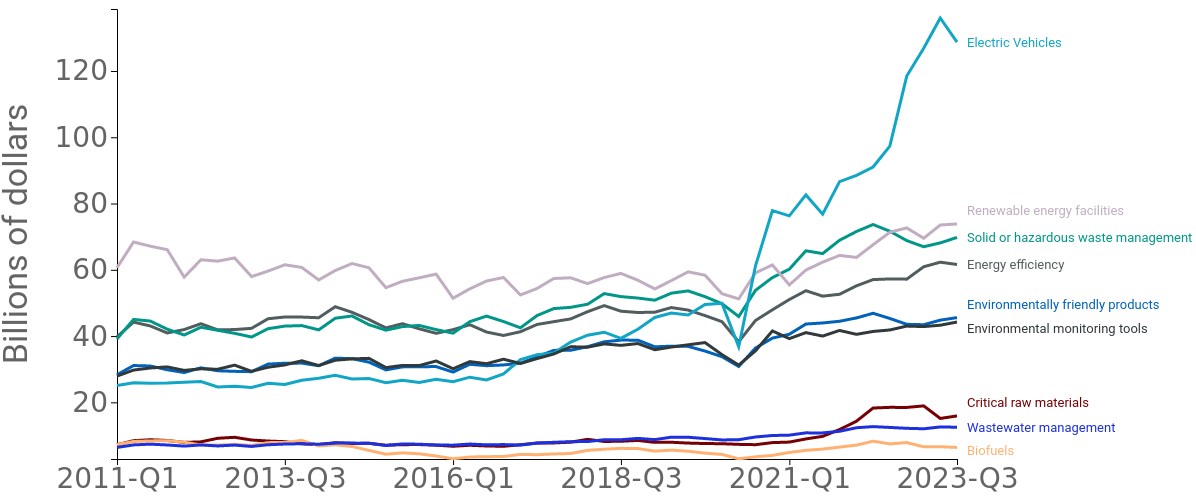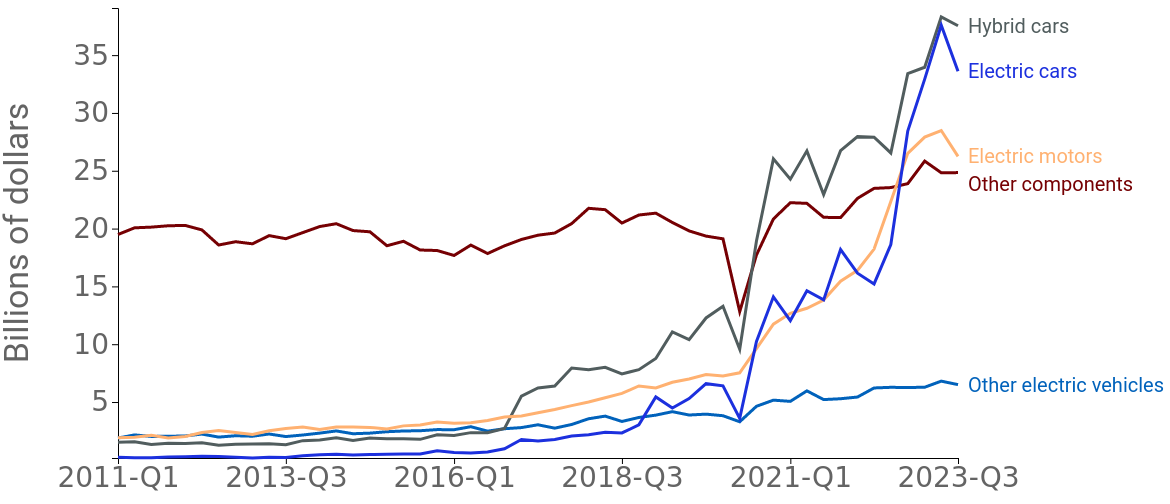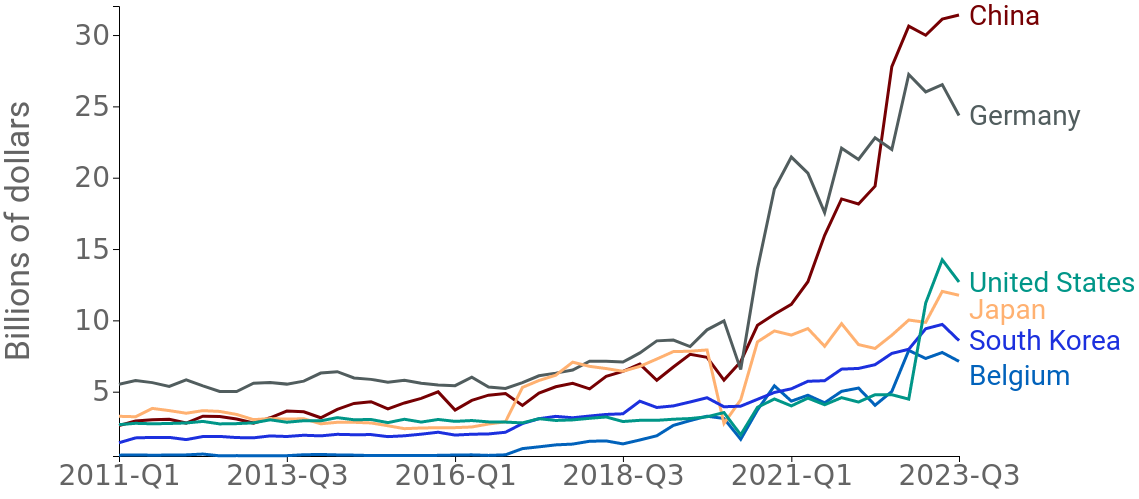World trade in green goods: the challenge of sustainability
Increasingly disruptive global demand for electric vehicles
Published by Marzia Moccia. .
Conjuncture Global demand High-tech Global economic trends
Log in to use the pretty print function and embed function.
Aren't you signed up yet?
signup!
Environmental sustainability is an extremely topical issue today, with an increasingly significant political and social scope. Increasingly, in fact, the concept of sustainability appears in the objectives of countries and businesses, which are committed to finding ways of development that meet the needs of the present without compromising those of future generations.
For example, climate action is at the heart of the European Green Deal, in which the European Union set out to achieve climate neutrality by 2050, calling on all member states to implement a coherent set of climate policies. A second example is also the U.S. Inflation Reduction Act (IRA), which was passed in August 2022 under President Biden and includes a number of measures aimed at boosting investment in renewable energy.
In the wake of the growing international interest placed on the topic of the green transition, trade in green goods has experienced a pronounced growth boost over the most recent quarters.
Evolution of world trade in green products
Within the macro-category of green or environmental goods are included all those products and technologies aimed at ensuring sustainable development and proper preservation of the environment, as evoked by the term itself. In particular, the most recent classification published by the International Monetary Fund, which extends the previous classification promoted by APEC to include both goods directly related to environmental management and protection, as well as goods that are becoming increasingly significant on the green transition front, such as critical materials and products more generally involved in the industrial and domestic energy efficiency process.
Overall, according to the APEC coding system, the size of global demand for green goods can be estimated at just over $565 billion in 2022. This figure grows significantly, and reaches $1680 billion (2022), if we take into account the extension to other types of products, as described by the IMF.
Fig.1 - World trade in green goods: APEC vs. IMF classification
(quarterly data, billions of dollars)

Source: ExportPlanning.
In both cases, however, the acceleration registered by global demand for these products at the dawn of the post-pandemic recovery seems particularly evident, indicative of the increasingly significant international interest in these issues. Indeed, consider that in both cases, the value of green goods traded in 2022 is about 40 percent higher than in 2019, with equally positive growth sprints in the current year.
Although growth has affected different types of households, it is evident that the sector largely driven has been Electric Vehicles, which has realized marked increases, coming to be worth about 25 percent of world trade in green goods, surpassing trade in goods for renewable energy installations and waste management, which were the largest items in the pre-pandemic.
Fig.2 - World trade in green goods by category
(quarterly data, billions of dollars)

Source: ExportPlanning.
It is evident from the proposed graph that the first change of pitch in the dynamics of global trade in Electric Vehicles occurred during 2016, when, in the wake of the so-called "Dieselgate," new mobility models began to be given more and more space.
In particular, interest in hybrid vehicles in particular had grown, compared with still limited interest in full electric cars. It was especially in the post-pandemic period that the most sustained increases were recorded, when world demand for this new category of vehicles experienced exponential growth spikes. These were followed by equally strong increases in world trade in electric motors for motor vehicles.
Fig.3 – Hybrid and electric vehicles: world trade
(quarterly data, billions of dollars)

Source: ExportPlanning.
Increasingly significant for the sector is now the role of the Dragon country, which is aiming to significantly harden its domestic industry with substantial investment in research and development. In fact, China has experienced solid growth in its exports both in supply chain, thanks to its significant role as a supplier of electric motors, and in finished products, with growth in the incidence of full electric vehicles.
Fig.4 – Hybrid and electric vehicles: major players
(quarterly data, billions of dollars)

Source: ExportPlanning.
However, the growth of the Chinese player has not gone unnoticed, casting concern on the future of the competitiveness of the European automotive industries, which finds Germany the leading exporter in the sector, with an export basket almost equally divided between all-electric and hybrid vehicles. Indeed, on Sept. 13, the European Commission announced the launch of an anti-subsidy investigation into imports of battery electric vehicles from China. The analysis will be aimed at investigating the possible presence of state subsidies, which threaten to cause economic injury to EU manufacturers of electric vehicles.
Conclusions
The topic of green transition is becoming an increasingly significant phenomenon on the world stage. It is especially so on the European scene, where the focus of industrial policy goals has been on so-called "twin" transitions, toward a digital and green economy, in order to achieve the goal of climate neutrality (see in this regard the following link).
The increasing attention placed by governments and consumers is thus making for businesses themselves, corporate sustainability an increasingly relevant competitive factor.


